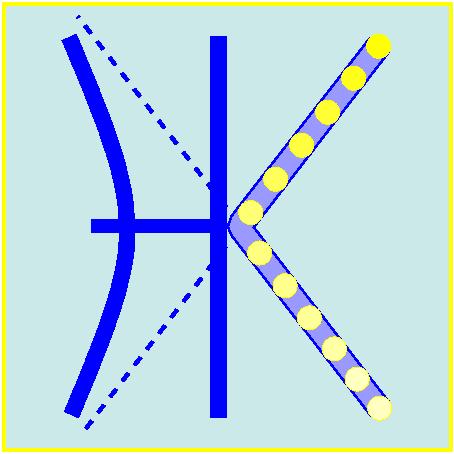|
Workshop:

" Wave Phenomena - Mathematical modeling and numerical simulation
"
10.-11.02.2005 in Hamburg
[
main page]
[
Program]
[
Participants]
Wilfried Zahel
Numerical modelling of global ocean tides with variational data assimilation and of global free oscillations - Analysis of data-induced dynamical residuals
Applying hydrodynamical-numerical tidal models has considerably contributed in the last decades to generating increasingly realistic tidal fields and to improving the understanding of physical mechanisms, as, e.g., the interaction of ocean tides and solid earth tides. However, models of barotropic tides generally neither include the interaction with the components of the non-tidal field of motion nor that one with the internal tides being characterized by a considerably smaller spatial scale. Due to the incomplete knowledge of dynamics and forcing of the fields of motion not considered in tidal models and partially to their relatively small spatial scale, it appears at present necessary to compensate these deficiencies of tidal models by assimilating data. By this proceeding for many applications very realistic tidal fields can actually be produced and simultaneously valuable information on relevant model deficiencies can be obtained.
With the help of reliable data, as having become available from satellite missions, and by including data assimilation procedures in proved classical models, highly realistic open ocean tidal fields have been generated and knowledge has been gained about the compensation of model deficiencies by taking into account data information. A global tidal model with variational data assimilation procedure is presented, which allows the assimilation of data belonging to wide classes of data types and which is characterized by a specific method of taking into consideration model error covariances. A version of this model including the shallow water terms has been made available and is used for considering shallow water tide effects in open ocean tide modeling and for separately computing adjacent sea tides with high resolution.
The results of global ocean tide modeling using uniformly distributed TOPEX/POSEIDON data and of adjacent sea computations using tide gauge data, being significantly affected by shallow water effects, are discussed. In addition to demonstrating the generation of highly realistic fields of sea surface elevation and current velocity and the improvement of derived geophysical quantities, special weight is put on analyzing the data-induced residuals of the dynamical equations. For this purpose, the energy and angular momentum budgets are derived, as resulting for the dynamical model and the solution to the minimization problem. Thus, the role which the dynamical residuals are playing in these budgets can be studied.
Evaluating the energy budget, it turns out that the residuals are dissipative in nearly all parts of the ocean in a very characteristic way. Evaluating the angular momentum budget, it becomes obvious that the residual contribution is two orders of magnitude larger than that of the frictional terms. These results hold in nearly the same way for the semi-diurnal tides as well as for the diurnal tides and show that in addition to the data implicitly inducing non-resolved open ocean frictional effects, dynamical data effects arise having spatial scales comparable with that ones of the Coriolis and the pressure gradient effects. In order to further investigate this property of the residuals, the free oscillation behavior of the global ocean has been computed for a period range including the semi-diurnal and diurnal tidal bands. Areas of resonance can be identified which closely correlate with areas of relative maximums of the dynamical residuals. Against that, other areas exist where, e.g., strong semi-diurnal resonance occurs, but where the dynamical equations are nearly fulfilled.
 back to main page
back to main page
|